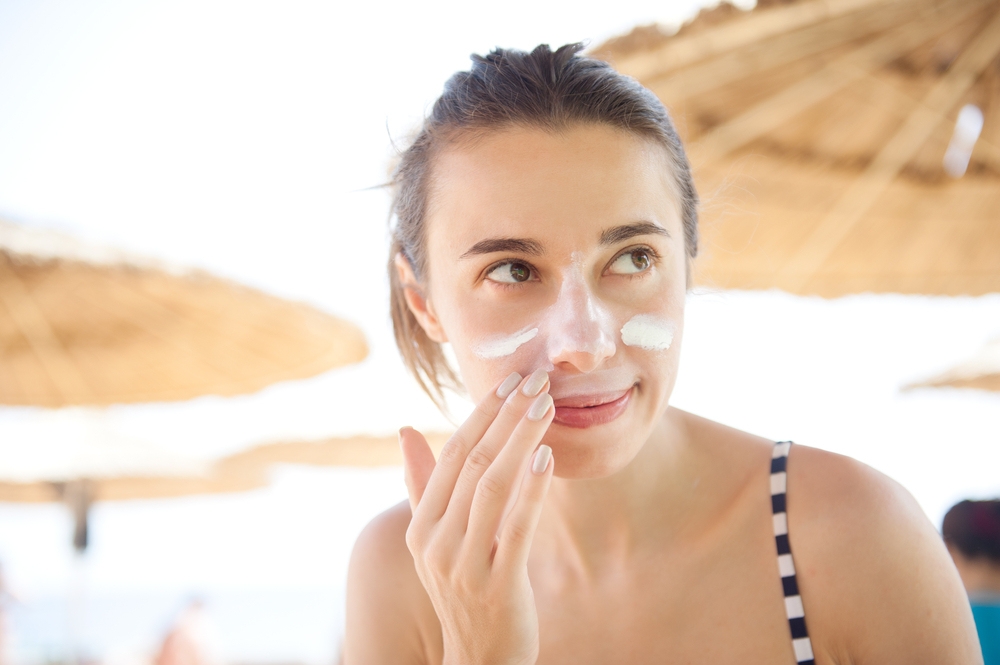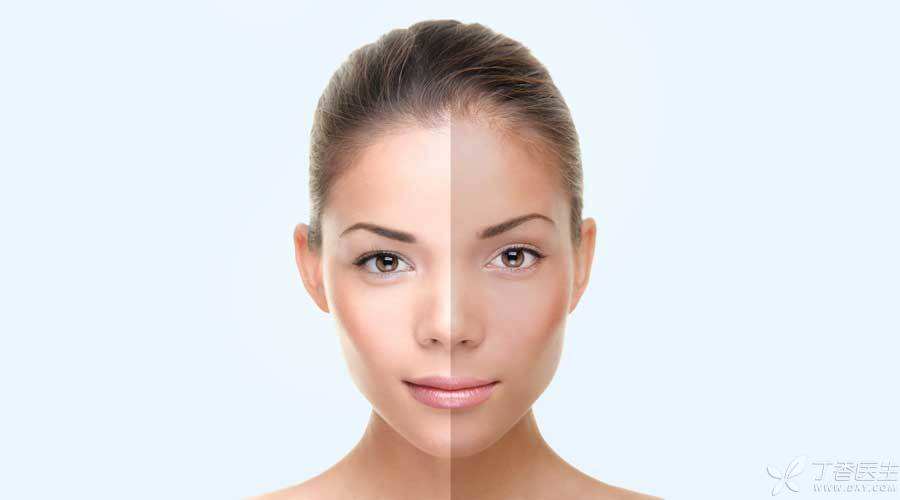
To be honest, do you think that most of the time we are just seeking self-comfort when applying sunscreen?
For example, when I was about to go out, I pulled open the curtains and saw the big sun. I quickly applied a layer of sunscreen three times, five times and two times. Then, my heart was at ease: Well, I applied sunscreen today, and I was not afraid of revealing my arms and legs.
As a result, after a summer, I got tanned and couldn’t help feeling: none of these sunscreens worked very well!
But have you ever thought that perhaps your sunscreen method is wrong?
Who is behind sunburn?
Ultraviolet rays that can cause skin damage in sunlight can be divided into medium-wave UVB and long-wave UVA according to different wavelengths.
UVB can reach the dermis layer, sunburn the skin, cause skin peeling, erythema, and even blisters in serious cases, but it can be [blocked] by glass, sunshade, clothes, etc.
UVA can penetrate into the dermis layer and tan the skin, which is the main reason for premature aging of the skin. It can cause skin aging, fine lines and even skin cancer. It has strong penetrating power and can be refracted into the room through glass windows.
Useful sunscreen to do so!

When it comes to sun protection, sunscreen is definitely the highlight, but it is not the only choice.
Step 1 Avoid direct exposure
The most basic principle is not to expose your skin directly to the sun.
From 10: 00 a.m. to 2: 00 p.m., the ultraviolet rays are strongest, so try to avoid going out or not to stay outdoors for too long.
2. Proper selection of physical sun protection measures
Wide-brimmed hats, sunshades, sunglasses, long-sleeved dark coats, etc. are also effective sun protection methods.
Step 3 Choose sunscreen correctly
The first step in choosing sunscreen products is to understand the main component of sunscreen products-sunscreen.
(1) Physical and chemical properties
Physical sunscreen is like a [protective cover], which [blocks] the ultraviolet rays irradiated to the human body, just like the reflective coating of sunshade umbrella. It is characterized by low irritation, suitable for sensitive skin, but greasy texture.
Chemical sunscreen agents are more like a [sponge], which first [sucks] ultraviolet rays in, then [vomits] them out in the form of heat through chemical reactions.
Their target is [ultraviolet rays have never been here].
(2) Sunburn protection and tanning index
SPF and PA are the two most common indexes of sunscreen on the market.
SPF is the embodiment of the ability to protect UVB. Simply speaking, it is sunscreen red. For example, when you don’t apply sunscreen, you will turn red in the sun for 1 minute. After applying SPF30 sunscreen, your skin will turn red only after you bask in the sun for 30 minutes.
PA is aimed at UVA, which is simply sunscreen. It is divided into three levels, namely effective PA +, quite effective PA + +, and very effective PA + + +.
(3) Exclusive sunscreen for different skin types
Oily and acne skin: You should choose sunscreen with strong penetrating water dosage form and oil-free formula. Generally, the product manual will indicate Oil-Free or Non-comedogenic, which is refreshing, non-greasy and does not block pores. Use sunscreen or physical sunscreen with caution for oily skin.
Dry skin: Dry skin must choose sunscreen with moist texture, moisturizing effect and enhancing skin immunity.
Sensitive skin: To be on the safe side, it is recommended to use professional sunscreen for sensitive skin, or the product description should clearly write down the explanatory words such as “pass allergy test”, “pass dermatologist test” and “do not contain perfume or preservative”. It is better to choose physical sunscreen.
(4) Selection of sunscreen agents by different populations
Outdoor work, plateau people and pregnant women are all important groups that need protection. As long as there is no sunscreen allergy, they can use it safely.
It is recommended to use SPF15 or so and PA + + or so sunscreen when going out everyday. Some people claim that sunscreen starts from dolls. Indeed, studies have proved that starting to use sunscreen regularly for a long time at the age of 18 can reduce the occurrence of melanoma by 50% and malignant invasive melanoma by 73%.
However, for children under 6 months old, the use of sunscreen should follow the doctor’s advice, and sunshade umbrellas, sunscreen clothing and other means are more recommended.
How many common mistakes have you made in sun protection?

1. The higher the index, the better
In daily life, choose SPF15 or so, PA + +.
First of all, if the index is too high, it will artificially reduce the number of repeated smearing, which will affect the sun protection effect. Secondly, products with high index are generally compounded with different sunscreen components, which has a relatively high probability of causing skin irritation or allergic reactions.
Of course, if you want to have long-term outdoor activities, you can choose sunscreen products with higher sun protection index.
Step 2 Smear too thin
The physical sunscreen ingredients in sunscreen will be slightly greasy, so many people only apply a very thin layer when using it, which cannot achieve sunscreen effect. According to the international standard for human body testing of sunscreen agents, the usage amount should reach 2 mg/cm ², which is about the same as the thickness of 1 ~ 2 sheets of A4 paper.
The survey shows that most people’s habitual dosage is only about 0.75 mg/cm ², which is one third of the standard dosage. This dosage cannot achieve the protective effect promised by the product. In order to achieve the effect, it must be thicker!
3. Rub and massage back and forth when smearing.
Some people rub and massage sunscreen back and forth on the face and squeeze it into pores, which is easy to [rub mud] and will block pores, thus reducing the sunscreen effect.
When smearing, apply appropriate amount to the fingers or palm, gently faint and pat it on the part that needs sun protection, and pat it evenly.
It is worth reminding that you should not apply sunscreen around your eyes and lips. You can use eye cream and lipstick with sunscreen value.
4. Apply it only when you have to go out.
Chemical sunscreens are the main force of sunscreens. They need to react with the skin in advance to be effective. Therefore, it is generally recommended to apply them 20 minutes before going out.
Step 5 Do not repeat smearing
Due to various reasons such as sweat dilution, self-degradation of sunscreen agent and continuous reaction of related components with ultraviolet rays, sunscreen will fail in about 2 hours, so if you are outdoors for a long time, you need to apply it every 2 hours.
6. Use cleansing oil to wash it clean.
Physical sunscreen particles are relatively large and need to be carefully cleaned, but now the particles are getting finer and finer, so ordinary facial cleanser can be used to clean them without special makeup removal.
7. Fruit color sunscreen clothing is fashionable and sunscreen.
In recent years, a kind of light and light sunscreen clothing with bright colors has become popular. In fact, dark clothes made of the same material have better sunscreen effect.
In addition, anti-ultraviolet clothes should have relevant sun protection signs on the tag. The commercially available sun protection clothes with tens of yuan each will not have better sun protection effect than ordinary clothes.
